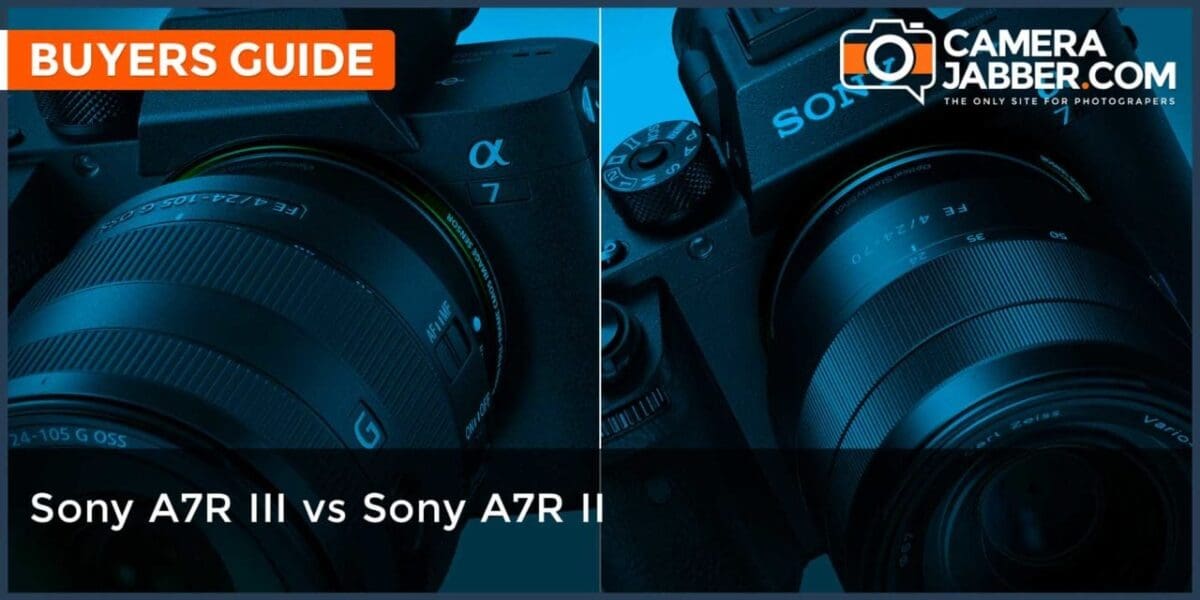In October 2013 the Sony A7R was launched to be the high-resolution member of the A7-trio of full-frame mirrorless cameras. The other two cameras were the 24Mp A7, launched at the same time as the AR7R, and the 12Mp A7S that came along 6 months later.
Sony took the resolution higher with the introduction of the 42.4Mp A7R II in June 2015, and while A7R III has the same pixel count, a sensor-shifting mode called Pixel Shift Multi Shooting mode enables images to be created from 169.6 million pixels. But that’s not all, there are plenty of other differences, so let’s take a look at how the key specifications compare.
Sensor
Both the A7RIII and A7R II have a backlit full-frame sensor with 42.2 million pixels. However, the A7R III has a front-end LSI that helps boost processing power. This is teamed-up with an enhanced Bionz X processing engine. Sony claims that this combo results in an almost 1EV improvement in noise control with the Mark III.
Continuous shooting
While the A7R II can shoot at 5fps, the A7R III can muster 10fps with full AF and metering capability. We’ve seen what the Sony A9 can achieve at 20fps, so it’s going to be exciting to see the A7R III in action.
Further good news is that the A7R III has a silent shooting option and this can operate at 10fps, again with the full AF capability. Sony says that the front-end LSI enables a 2x increase data readout from the sensor while the updated processing engine gives a 1.8x improvement upon the Mark II. Will these speed enhancements be sufficient to keep golf clubs and the like straight in images? We’ll have to wait and see.
If you want to have a live view image of the scene you’ll have to drop to 8fps shooting with the A7R III.
Touch-control
Sony hasn’t made a big deal of it in the press release, but the 3-inch, 1.4K-dot screen on the A7R III is touch-sensitive. It seems like it has a similar level of functionality as the A9’s screen, so that means there’s no touch-control over the menus, but there’s a Touch Pad option that lets you set AF point while looking in the viewfinder.
Autofocus
The A7R III has 399 phase detection AF points, the same number as on the A7R II sensor, but the number of contrast detection points has increased by 400 to 425. More crucially, though the A7R III’s AF system is claimed to acquire focus in about half the time taken by the A7R II’s in low-light and tracking is two-times more accurate.
Sony also says that the EY AF is 2x more effective and it’s available on the A7R III with Sony A-mount lens mounted via an adaptor.
Oh, and then there’s the mini-joystick…
Design
One of the features that has proved most popular with the Sony A9 is the mini joystick that allows quick AF point selection. This is something that is missing from the A7R II and was widely requested for the A7R III, thankfully Sony has been listening and its there on the back of the new camera.
In addition, the video button that is awkwardly placed on a corner of the A7R II is now on the back of the A7R III making it in conveinet reach of your right thumb.
Battery
Sony has faced criticism for the battery life of some its interchangeable lens cameras. While the A7R II has a claimed battery life of 290 shots when the viewfinder is used to compose images and 340 shots when the screen is used, the new battery in the A7R III clocks up 530 shots with the viewfinder and 650 shots with the monitor. Nice.
Image Stabilisation
The A7R II has a very good stabilisation system but Sony has improved it for the A7R III and it now offers up to 5.5EV of shutter speed compensation across 5 axis. That’s the highest level of compensation for a full-frame camera.



